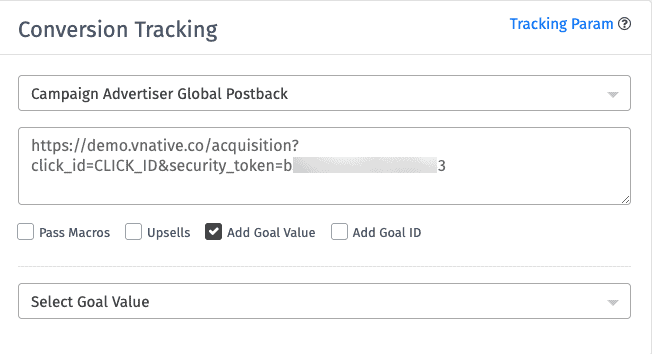Often while running our performance marketing campaigns, we tend to ignore or not know about the key performance metrics & various parameters that can be tracked & traced. It is very important to track the right parameters of your affiliate marketing campaign in order to analyze, & optimize the campaigns in a more effective way. The amount of data fetched via tracking of performance metrics is in turn used by the marketers to make decisions in order to enhance their marketing performance & scale their businesses.
There are primarily 2 ways via which you can track your performance metrics, Pixel tracking & Postback tracking. In Postback tracking a Postback URL request is sent to a third-party system that notifies them of conversion (a sale, a lead capture, or an install). Postback URLs can be set up for each advertiser or publisher on all campaigns (a global postback URL) or you can add the postback URL for a single campaign. Due to cookieless tracking, Postback tracking is recommended to all our users, as it is a much more secure method to track conversions.
Tracking Parameters Which You Can Track
After integration with your advertiser via server postback & pixel, you can fetch certain information via postback URL.
Here you will get the list of macro Trackier support for Advertiser s2s Integration.
| Macro | Parameter |
| click_id | you need to ask the advertiser to add their click id macro equal to this parameter in a postback. |
| sale_amount | The advertiser provides you with the sale amount for the CPS campaign and sets the payout and revenue of the campaign based on that. |
| sub1-sub10 | Open Parameter so that you can get any information from the advertiser end. |
| currency | Used to get Currency of payout from the advertiser. |
| txn_id | you can get a unique id for each unique sale or registration, this ID is generated by the Advertiser system. |
| goal_value | After creating a goal, add the goal value in this parameter. |
| revenue | Used to fetch dynamic payout from your advertiser |
| status | Get the status of the conversion. check below what we support. and how to use |
Please Note: Following are the status values that can be fetched
- Pending
- Approved
- Canceled
- Rejected
Partners can ask the advertiser to send their status based on the conversion they have recorded. So for the eg conversion is pending on their end then they fire postback with &status=pending.
For Example
Things To Know:
You can fetch the Advertiser server postback for a particular campaign and in the Particular advertiser info page
- In Campaign: Open particular campaign you have created, scroll down & at the bottom right you will find Conversion Tracking Card.
- In Advertiser: From the left menu open Advertiser > Manage > Particular Advertiser > On the right-hand side you will find the postback URL
Both of them are the same, whichever is convenient you can use.
Check out this sample image:

Advertiser Postback URL
Default: It can be anything, depending upon your primary tracking metric. eg: Install, registration anything.
| https://demo.vnative.co/acquisition?click_id={ADVERTISER_CLICK_ID_MACRO}&security_token=bxxxxxxxxxx3&txn_id={ADVERTISER_MACRO_FOR_TXN_ID}&sub1={MACRO__ADV} |
Goal: Goals are set based on the subsequent events that take place, let’s say when the user made the install like registration then purchase, and so on.
| https://demo.vnative.co/acquisition?click_id={ADVERTISER_CLICK_ID_MACRO}&security_token=bxxxxxxxxxxxxxxxxxx3&goal_value=register&txn_id={ADVERTISER_MACRO_FOR_TXN_ID}&sale_amount={ADVERTISER_SALE_AMOUNT_MACRO}&sub1={MACRO__ADV} |
So that is what you’ll be needing to ask the advertiser to replace with their macro when it comes to Postback URL setup.
Advertiser iframe/ image Pixel
Default: The default can be the main metric that you would like to track first. eg: Install, registration anything.
| <iframe src=”https://demo.gotrackier.com/pixel?adid=5ecxxxxxxxxxxxxxx71{ADVERTISER_MACRO_FOR_TXN_ID}&sub1={MACRO__ADV}” scrolling=”no” frameborder=”0″ width=”1″ height=”1″></iframe> |
Goal: It is for subsequent events that take place, let’s say when the user made the install like registration then purchase, and so on.
| <iframe src=”https://demo.gotrackier.com/pixel?adid=5ecxxxxxxxxxxxxxxxx0671&goal_value=register&txn_id={ADVERTISER_MACRO_FOR_TXN_ID}&sale_amount={ADVERTISER_SALE_AMOUNT_MACRO}&sub1={MACRO__ADV}” scrolling=”no” frameborder=”0″ width=”1″ height=”1″></iframe> |
So here, you’ll ask the advertiser to replace it with their Macros.
Pro Tip: If you still have any doubt regarding this, you can our this article or raise a concern at support@trackier.com






